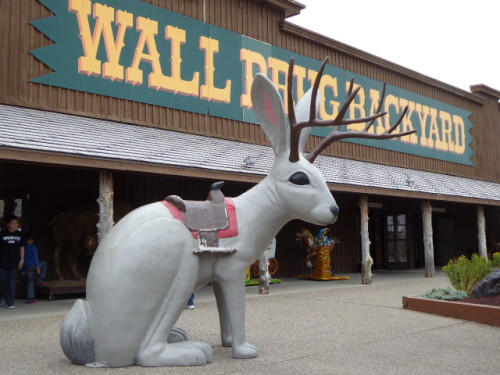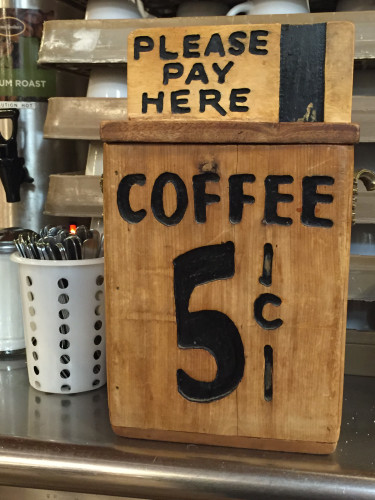Two South Dakota spots I recently visited – Deadwood and Wall Drug – face with the classic tourism challenge: how to get people to come visit. And then visit again.
Here’s a slightly edited version of the story I put together for CNBC:
Since its Gold Rush-era founding in 1876, the South Dakota frontier town of Deadwood has been through several booms and busts.
Yet it retains a veneer of the Wild West and keeps fresh the stories of legendary residents such as Calamity Jane and Wild Bill Hickok.
But Deadwood is trying not to live up to its name: the town that helped spawn a popular cable series is looking for a shot of something new.
“All destinations need to evolve over time, even those that that wish to remain the same,” said Alan Fyall, a professor in the Rosen College of Hospitality Management at the University of Central Florida in Orlando.
Since November, 1989 — the year that Deadwood joined Las Vegas and Atlantic City as a cohort of then U.S. cities with legal non-reservation gaming — more than $18 billion has been wagered in the town. That activity has generated millions of dollars in tax proceeds to restore historic buildings in Deadwood, and to promote tourism statewide.
But despite the addition of keno, craps and roulette this past summer, Deadwood is no longer confident of its winning hand.
Recently, state data showed the city’s gaming revenues have plateaued, prompting some officials to suggest the town has to adapt to a more competitive landscape.
“Gaming is now ubiquitous nationwide, and Deadwood can’t just rely on gambling or its Western culture anymore,” said South Dakota Gov. Dennis Daugaard
On that score, Deadwood’s Revitalization Committee recently commissioned a 96-page action plan that contains recommendations on how the town can capitalize on its history and place in popular culture.
Deadwood’s popularity is at least partly attributed to HBO’s three-season-long “Deadwood” TV series (which was canceled in 2006 but is still popular online) and attractions such as Kevin Costner’s memorabilia-filled Midnight Star casino and restaurant on Main Street.
“The town has so many things going for it beyond gaming,” said Roger Brooks, whose tourism consulting firm put together the revitalization report. “Plus, with a name like Deadwood, it doesn’t get much better when it comes to being able to stand out.”
Brooks would like Deadwood’s Wild West-themed streets to be more authentic and pedestrian friendly. He’s also urged the town to create a central plaza where regular entertainment and activities can take place. Meanwhile, the town’s business community is grabbing the proverbial bull by the horns and rallying around those recommendations.
“We developed 55 action items from the report, and have been busily working on making them happen,” said Mike Rodman, executive director of the Deadwood Gaming Association and a member of the Revitalization Committee.
Currently, the town is building a new welcome center and in town more technology-friendly parking meters now accept credit cards and cell-phone payments.
“We also cleaned up our signage, put up baskets of flowers on the street lights and wrapped some electrical boxes to make them less visible,” said Rodman.
Next on the list: finishing plans for two downtown plazas and raising the $8.8 million needed to move that part of the plan forward, said Rodman.
Meanwhile, at Wall Drug
Deadwood may need to change, but Wall Drug credits its success to remaining pretty much the same.
Now a block-long oasis of kitsch visited annually by more than a million visitors traveling along a lonely stretch of Interstate 90, Wall Drug got its start in the 1930s when the owners of a struggling drug store put up highway signs advertising free ice water.
Thirsty Depression-era travelers pulled over for refreshments and purchased ice-cream and other small items while they were there.
Over the years, Wall Drug evolved into one of the country’s most famous pit stop, with a cafe, restaurant, art gallery and shops that sell everything from postcards and T-shirts to jackalope hunting permits, turquoise jewelry and high-end cowboy boots and western wear.
Dozens of free, photo-friendly attractions were built as well, including a giant jackalope, a replica of Mt. Rushmore, a shooting gallery arcade and a giant Tyrannosaurus rex that roars to life every 15 minutes.
The ice water is still free, the coffee is just 5 cents and many grandparents make a point of reliving their childhood Wall Drug experience with their grandchildren.
“My father and my grandparents wanted Wall Drug to be someplace where people could stop, have a nice meal and enjoy themselves without spending much money if they didn’t want to,” said Rick Hustead, current Wall Drug chairman and the oldest grandson of founders Dorothy and Ted Hustead.
“Our guests spend on average two and a half hours here and 50 percent of our business is repeat customers, so we must be doing something right,” Hustead added.
Thanks for visiting Stuck at the Airport. Subscribe to get daily travel tidbits. And follow me on Twitter at @hbaskas and Instagram.

